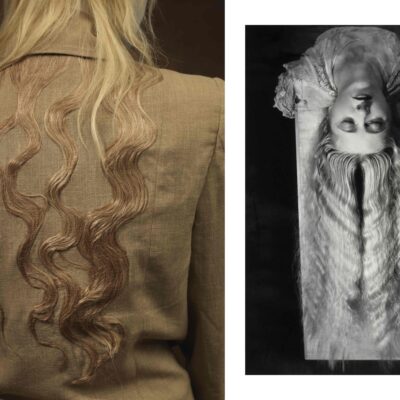
Exhibitions 18.07.2023
01.01.2019
1920s1930sfashion illustration
Rediscovering the work of a woman who portrayed Berlin through her fashion illustrations
Dörte Clara Wolff, better known as DoDo, was a German Jewish artist and illustrator, born in Berlin in 1907. She learned to draw very early, attended the Reimann School and soon began working as a fashion illustrator for various newspapers: in 1928 the satirical newspaper ULK – a widely distributed satirical journal – hired her as regular contributor.
Dodo is a product of the Weimar Republic, where she studied alongside artists as George Grosz, Otto Dix, Rudolf Schlichter, Rudolf Wilke or Karl Arnold. Dodo specialized in fashion illustrations: she used to make her drawings after observing clothes and models wearing them, applying a style linked to the artistic environment she was immersed in. Not only did she produce fashion illustrations, but also satirical illustrations, biblical illustrations, illustrations for children. Her style changed throughout the years, from expressionist experimentations to the realism of the 1940s and 1950s. Apart for her peculiarities as illustrator, DoDo was also fascinating for her personal style: a boyish look, composed by men’s clothes, a monocle, always smoking and walking around with a stick.
Dodo received wide recognition for her ironic representations of scenes taken from the daily life of the sophisticated haute bourgeoisie of Berlin. In these depictions, she focused mainly on the relationship between the sexes. The models are usually depicted in front of metropolitan backgrounds, as cafes, bars and dance halls. Thanks to her acute powers of observation, her illustrations made DoDo the perfect chronicler of the glamourous and ambivalent golden twenties.
DoDo’s illustrations did not remain just on the page: in 1928 she also designed the costumes for the show “Wenn die beste Freundin”. The show was composed of various sketches in which the most famous is a duet by Margo Lion and an unknown anchor Marlene Dietrich. The song ‘Wenn die beste Freundin’ (When My Best Girlfriend) with a playful and ambiguous text became a small hymn to the lesbians of those years.
In 1936, the political situation in Germany obliged her to emigrate to England. Her career did not grow in this new environment, and her oeuvres was largely forgotten. DoDo’s work was rediscovered in 2012, with two exhibitions staged at the Staatliche Museen in Berlin and at the Ben Uri Gallery, The London Jewish Museum of Art, giving new awareness of her art before a global audience.